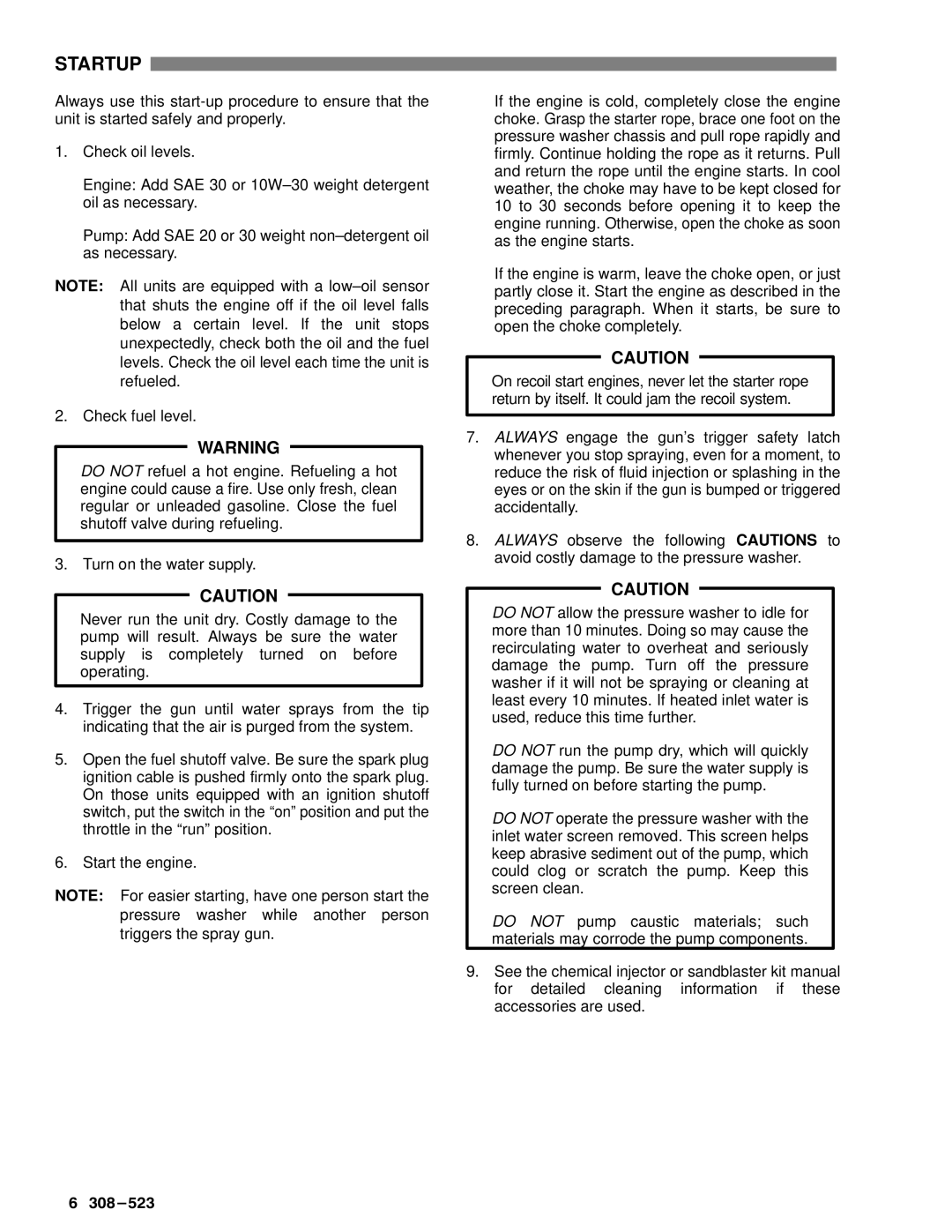800-670, 800-671, 800-674, 800-672, 308-523 specifications
Graco Inc is a leading manufacturer of fluid handling systems and products, recognized for its innovative solutions in a variety of industries, including construction, automotive, industrial, and more. Among its extensive lineup, Graco offers a range of air-assisted airless sprayers, electric sprayers, and hydraulic sprayers, designed for professional applications. The model numbers 800-674, 308-523, 800-670, 800-672, and 800-671 refer to specific units designed to meet diverse needs, each boasting unique features that contribute to efficiency, precision, and ease of use.One of the main features of these Graco products is their advanced spray technology. Graco has developed a unique air-assisted airless technology that combines the benefits of both traditional airless spraying and air sprayers. This results in a fine finish with reduced overspray and improved transfer efficiency. Users benefit from the ability to tackle various coatings, from thick materials to thin stains, with consistent results.
Durability is another key characteristic of Graco sprayers. These units are built with high-quality materials, ensuring they can withstand the rigors of daily use in demanding environments. Their components are designed for longevity, reducing the need for repairs or replacements over time. Additionally, Graco’s sprayers often include features such as easy-to-clean pumps and quick-change tip systems, enhancing operational efficiency.
User-friendliness is a crucial consideration in the design of Graco’s equipment. From intuitive control panels to adjustable pressure settings, the sprayers are designed to cater to users of varying experience levels. This focus on ergonomics reduces operator fatigue and simplifies the setup and clean-up processes, allowing professionals to concentrate on their work without getting bogged down by complicated machinery.
Another important aspect of Graco sprayers is their versatility. The models can handle a wide range of materials, making them suitable for various applications, from residential painting to large-scale industrial projects. The compatibility with different nozzles and spray tips further enhances this versatility, enabling users to switch applications seamlessly.
In summary, Graco Inc’s model numbers 800-674, 308-523, 800-670, 800-672, and 800-671 embody the brand’s commitment to innovation in fluid handling equipment. With advanced spraying technology, durability, user-friendly features, and versatility, these sprayers are trusted by professionals seeking reliable solutions for their painting and coating needs. Graco continues to set the standard in the industry, ensuring that users achieve high-quality results efficiently and effectively.

